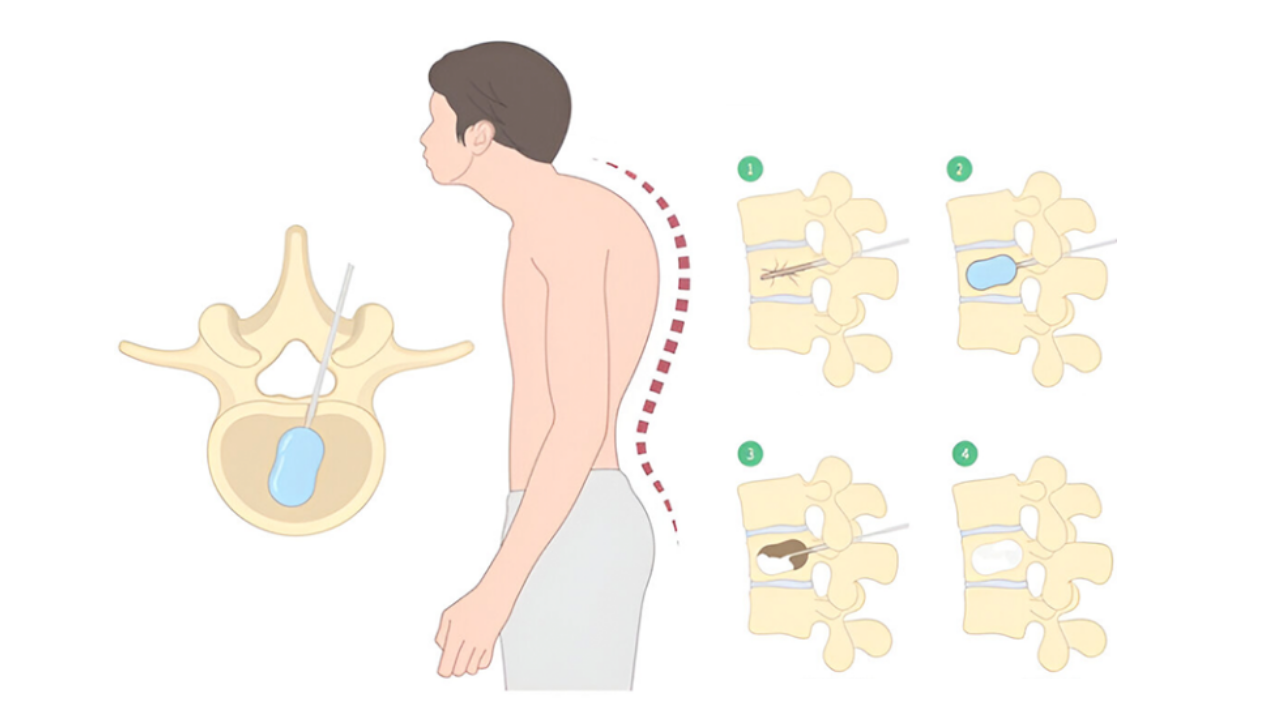
How Balloon Kyphoplasty Can Treat Spinal Fractures and Restore Mobility
Balloon Kyphoplasty is a minimally invasive surgical procedure designed to treat vertebral compression fractures (VCFs) commonly caused by osteoporosis, trauma, or cancer. The procedure helps stabilize the spine, reduce pain, and restore vertebral height, ultimately improving mobility and quality of life.
Who Needs Balloon Kyphoplasty?
Balloon Kyphoplasty is recommended for individuals who experience:
- Osteoporosis-related spinal fractures – A common cause of vertebral compression fractures in older adults.
- Severe back pain due to vertebral compression fractures – Persistent pain that affects daily activities and quality of life.
- Reduced spinal mobility – Difficulty bending, standing, or walking due to spinal instability.
- Spinal fractures caused by cancerous lesions – Conditions such as multiple myeloma or metastatic cancer can weaken bones and lead to fractures.
- Fractures unresponsive to conservative treatment – When treatments like physical therapy, and pain medications fail to provide relief.
How Does Balloon Kyphoplasty Work?
Balloon Kyphoplasty is a highly effective procedure that restores spinal stability through the following steps:
- Minimally Invasive Approach – A small incision is made, and a narrow tube is inserted into the fractured vertebra.
- Balloon Inflation – A specialized balloon is carefully inflated inside the vertebra to create space and restore height.
- Bone Cement Injection – The balloon is removed, and medical-grade bone cement is injected into the vertebral cavity to stabilize the fracture.
- Quick Recovery – The cement hardens rapidly, allowing for immediate stabilization and pain relief.
Benefits of Balloon Kyphoplasty
- Immediate Pain Relief – Many patients experience significant pain reduction within 24-48 hours after the procedure.
- Restores Spinal Height – Helps correct spinal deformities caused by compression fractures.
- Minimally Invasive – A small incision means reduced surgical risks and a shorter recovery period compared to traditional spinal surgery.
- Enhanced Mobility – Patients regain the ability to perform daily activities with less discomfort.
- Outpatient Procedure – Most patients return home the same day or within 24 hours.
- Improved Quality of Life – Reduced pain and better mobility contribute to overall well-being and independence.
What to Expect Before, During, and After the Procedure
Before the Procedure
- Initial Consultation – A spine specialist at Vertex Pain Physicians will evaluate your medical history, symptoms, and imaging studies (X-rays, MRI, or CT scans) to determine if Balloon Kyphoplasty is right for you.
- Preoperative Instructions – You may be asked to stop taking certain medications (e.g., blood thinners) and avoid eating or drinking for a few hours before the procedure.
During the Procedure
- Anesthesia – The procedure is performed under local or general anesthesia, ensuring patient comfort.
- Fluoroscopic Guidance – A live X-ray is used to precisely guide the balloon catheter into the fractured vertebra.
- Balloon Inflation and Cement Injection – Once the fracture space is expanded, the balloon is removed, and bone cement is injected to stabilize the vertebra.
- Procedure Duration – The entire process typically takes 30-45 minutes per vertebra.
Recovery Timeline
- First 24 Hours – Patients are advised to rest and avoid strenuous activities.
- 1-2 Weeks – Gradual return to normal activities, with post-operative pain management as needed.
- 1 Month & Beyond – Most patients experience long-term pain relief and improved spinal function.
Why Choose Vertex Pain Physicians for Balloon Kyphoplasty in San Antonio?
Vertex Pain Physicians is a leading pain management clinic in San Antonio, specializing in advanced spinal treatments. Our board-certified specialists provide cutting-edge, patient-centered care to ensure the best outcomes for individuals suffering from spinal fractures.
What Sets Us Apart?
- Expertise in Minimally Invasive Spine Procedures – Our specialists have extensive experience in performing Balloon Kyphoplasty with high success rates.
- Latest Facilities – We use the latest imaging technology and medical equipment to ensure precise, effective treatment.
- Comprehensive Pain Management – From diagnostic evaluations to post-procedure rehabilitation, we offer a full spectrum of pain management solutions.
- Personalized Care – Every treatment plan is customized to meet the unique needs of each patient.
Schedule a Consultation
If you’re experiencing severe back pain from a spinal fracture, Balloon Kyphoplasty may be the right solution for you. Contact Vertex Pain Physicians, the leading pain management clinic in San Antonio, to schedule an appointment today.
Frequently Asked Questions (FAQs)
1. How long does the procedure take?
The procedure typically lasts 30-45 minutes per vertebra.
2. Is Balloon Kyphoplasty painful?
Patients may feel mild discomfort, but general or local anesthesia ensures a pain-free experience.
3. How soon can I return to normal activities?
Most patients can resume light activities within 24-48 hours and more strenuous activities within a few weeks.
4. How effective is the procedure?
Studies show that 85-90% of patients experience significant pain relief and improved mobility.
5. Can Balloon Kyphoplasty prevent future fractures?
While it stabilizes existing fractures, ongoing osteoporosis treatment is necessary to prevent new fractures.
6. How do I know if I’m a candidate for Balloon Kyphoplasty?
A spine specialist can determine your eligibility based on imaging studies and medical history.
7. What is the success rate of Balloon Kyphoplasty?
Clinical studies show a success rate of over 85%, with significant pain reduction and improved mobility.
8. Where can I get Balloon Kyphoplasty in San Antonio?
Vertex Pain Physicians specializes in Balloon Kyphoplasty and other advanced spine treatments. Contact our San Antonio clinic for a consultation.
Medical Disclaimer
This article is for informational purposes only and is not a substitute for professional medical advice. Consult a qualified healthcare provider for diagnosis and treatment recommendations.



